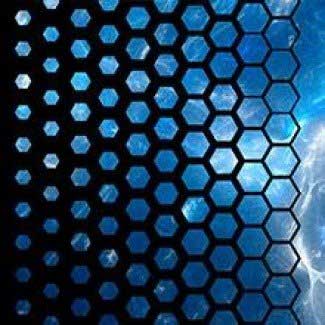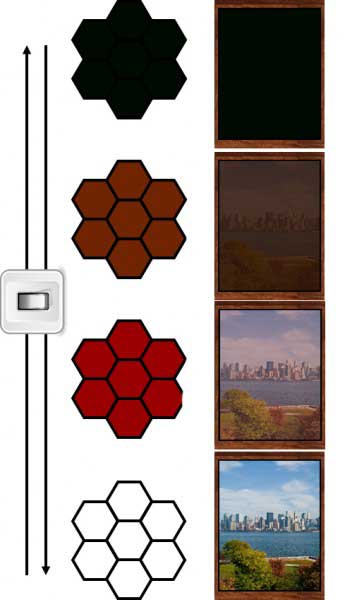| Posted: May 02, 2017 |
Saving energy through light control
(Nanowerk News) Tired of inconvenient blinds and shades? Switch to smart glass, windows that get dark on bright days and turn clear on cloudy ones. Researchers at the Center for Excitonics took advantage of the fundamental properties of molecules to design a material that changes from transparent to opaque (and vice versa) within only a few seconds (Chem, "Transparent-to-Dark Electrochromic Behavior in Naphthalene-Diimide-Based Mesoporous MOF-74 Analogs").
|
 |
| A porous material, with a honeycomb-esque structure, quickly changes from transparent to opaque when it meets an electrical current. (Image: Nathan Johnson, Pacific Northwest National Lab)
|
|
If someone asks you which sector of modern American life is the most energy demanding, what would you say? Industry? Transportation, maybe? Well, not quite. According to the Energy Information Administration, in 2015, residential and commercial buildings consumed half of all the energy produced in the United States.
|
|
Making our neighborhoods comfortable costs us a lot of energy, but the proper control of sunlight can drastically reduce heating and cooling costs. Along these lines, the versatile chemical composition and high porosity of metal-organic frameworks (MOFs for short) make them suitable for a broad variety of applications.
|
|
Metal-organic frameworks are sponge-like, porous materials formed by an extended network of metallic centers (nodes) tied together with organic molecules (linkers). The MOF used in this study resembles a honeycomb as shown in the figure, where the hexagon vertices are nodes and the edges are linkers. Both components are key to the success of the material.
|
No more blinds
|
|
There is a particular family of molecules that can change color under an applied electric current. Based on that idea, the researchers prepared a MOF using one of those color-changing molecules as the linker. The new design worked nicely. With an applied voltage, the MOF transitioned from transparent to opaque and vice versa, as shown in the figure.
|
|
But wait, here is where the unique nature of MOFs really pays off. While other compounds need several minutes to change color, the MOF only takes a few seconds. The high efficiency comes from its sponge-like structure, which allows a fast movement of charged species within the pores of the material.
|
 |
| Change of a metal-organic framework (honeycomb) from transparent to opaque upon an electric current. (Image: Manuel A. Ortuño, ICDC EFRC)
|
|
Before throwing all your blinds and shades away, we first need to apply a MOF coating on glass to further develop smart window applications. Now the other component of the MOF — the metallic node — enters into play. The researchers found that the MOF with nickel nodes adhered to glass faster than its magnesium counterpart. The rapid growth produces a smooth, thin film on glass that greatly improves the optical properties of the nickel-based material.
|
Clear sight to the future of energy savings
|
|
This study demonstrates the potential of MOFs as energy-efficient materials. The fast and nearly complete transition from transparent to dark holds promise to design new technologies for elevators, screen projectors, aircrafts, and trains. To paraphrase the old saying: In the country of blinds, MOFs are the new kings.
|


